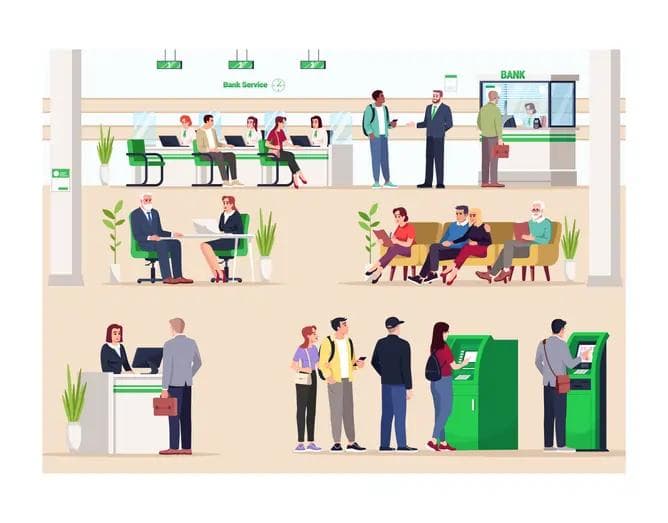How challenger banks have sparked a tectonic shift in tax technology
How challenger banks have sparked a tectonic shift in tax technology
Published by Gbaf News
Posted on December 10, 2019

Published by Gbaf News
Posted on December 10, 2019

By Russell Gammon, chief product officer at Arkk Solutions
The likes of Monzo, Starling and Revolut continue to disrupt the banking industry, with one in four UK adults under 37 now using a digital-only challenger bank[1].

Russell Gammon
Born out of a belief that traditional banking is broken, this new wave of fintech firms are providing customers with fast, digital, and intuitive experiences. With their services built natively on cloud technology, they are more responsive to changing market conditions and can easily roll out new features to attract and retain customers.
Many sectors are looking at the appeal of challenger banks in the search for similar success. But for me, it is the tax industry that should take the greatest inspiration – because there are so many parallels between the outdated systems of traditional banks and the clunky processes still used by many tax teams. But first, let’s look at precisely how challenger banks are embracing modern technology.
Banking in the cloud
Monzo’s website says that “for too long, banking has been obtuse, complex and opaque”. A key reason for this is that traditional banks tend to run on old, on-premise technology that’s difficult to update. It’s also hugely costly to maintain; banks typically spend 80% of their IT budgets on legacy technology maintenance[2].
In contrast, challenger banks have been built from the ground up on cloud technology. This means they can take advantage of transparent standards and avoid the hassle of in-house maintenance. They’re dispelling the ‘cloud is not secure’ myth, using mega vendors like Microsoft and Amazon to host critical services and confidential customer data. And by easily integrating cloud-based AI, they’re stopping fraudulent activity before customers even notice it.
Focusing on experience
Challenger banks have taken exception to the old, accepted ways of serving customers. For example, they’ve turned the lengthy process of opening a new account on its head. No visit to a physical branch. No paper forms to fill. No days left waiting for approval. New banks have replaced these with a digital sign-up process that takes less than five minutes, all done securely via the customer’s mobile phone.
But signup is just the start. Because challenger banks are inherently more agile than traditional banks, they can react to new techtrends and quickly introduce new services to keep up with their rivals.
The effort and investment they’ve made in radically transforming the user experience (inspired by other app-based leaders like Uber and Airbnb) has been a key success factor for challenger banks.
Transforming tax technology
So how can the rise of fintech be replicated in the realm of tax? Are we on the verge of a new era of ‘taxtech’?
Well, we’ve already seen tools like Xero and Quickbooks gain significant popularity among small- and medium-sized businesses thanks to their ease of use and ability to automate tax processes. But can this be achieved at a bigger corporate level? I certainly think so.
Similar to traditional banks, the technology used by larger tax departments is ripe for disruption. It has been dominated by a handful of vendors, who focus mainly on tax compliance, but also offer point solutions to niche problems like transfer pricing and capital allowances. This has left tax teams with multiple footprints of multiple products, all with different training and support requirements – rather than one toolfor one discrete task.
Furthermore, many existing solutions were built in the early 2000’s when the technology landscape was a lot different. Very little investment has been made since. Some vendors have built cloud components, but these are typically add-ons to their on-premise solution. They don’t support the cloud-first or cloud-only policies that most firms now follow as standard.
Automate for accuracy
Because vendors have been able to rest on their laurels in this uncompetitive tax technology market, innovations like automation, machine learning and AI have yet to make their way into the tax mainstream.
That’s a massive opportunity. Tax datasets are usually very large, with thousands of lines to be checked manually, using a sample or some logic.Machine learning can apply more detailed logic to all of those transactions and ensure that tax is calculated to the penny, whilst freeing tax professionals to use their time on more valuable (and fulfilling) tasks. For example, our Fix & Verify Solution uses machine learning functionality to speed up VAT submissions and give tax teams more confidence in the accuracy of their returns.
Build for function, but also beauty
Tax technology has always been built from a functional perspective, based on the tasks that tax professionals need to do. In fact, most developers have been required to complete a tax qualification to ensure they fully understand what’s needed.
What’s been overlooked is the user experience. Tax tools can be clunky and painful to use, lagging far behind others in the software world. But as with all other areas of work, tax teams are becoming less patient with poor technology experiences – they expect better, and will soon demand it.
So overall, I’ve little doubt that the next couple of years will bring a tectonic shift in taxtech. As more light is shone on the limits of legacy systems and processes, the taxtech market will quickly get up to speed with other industries. And we can definitely thank the challenger banks for that.
Explore more articles in the Banking category











